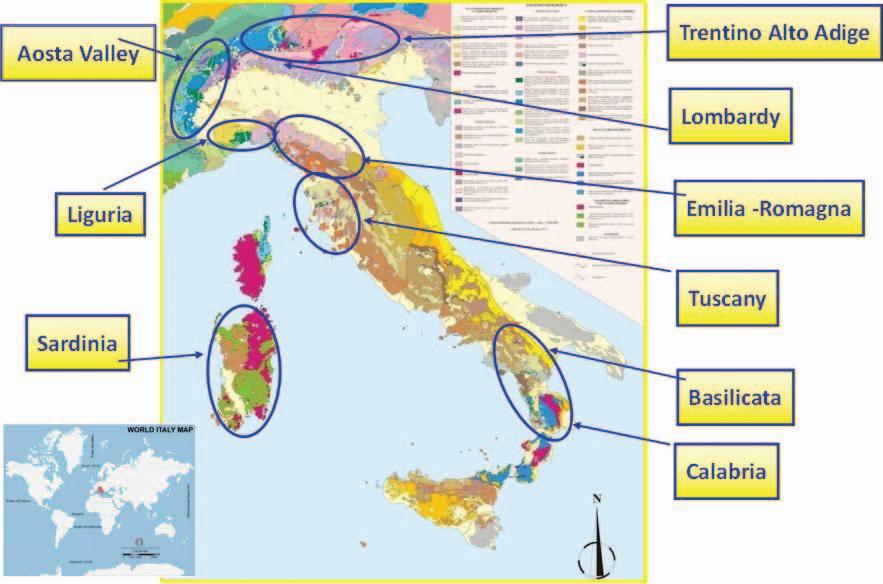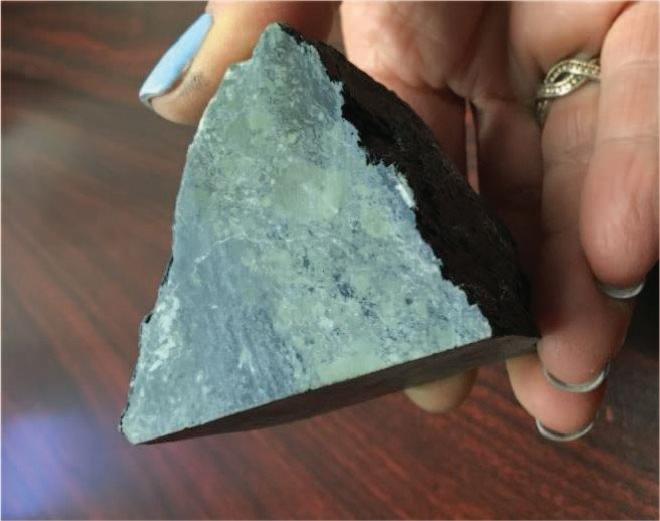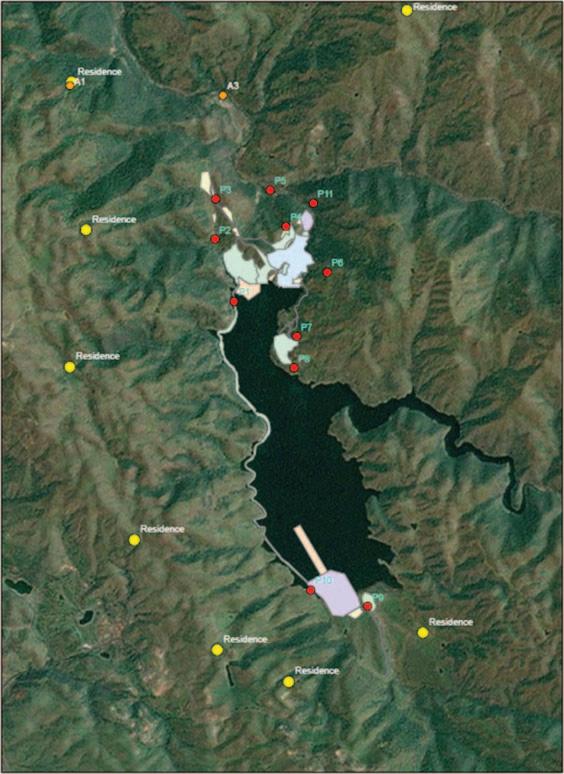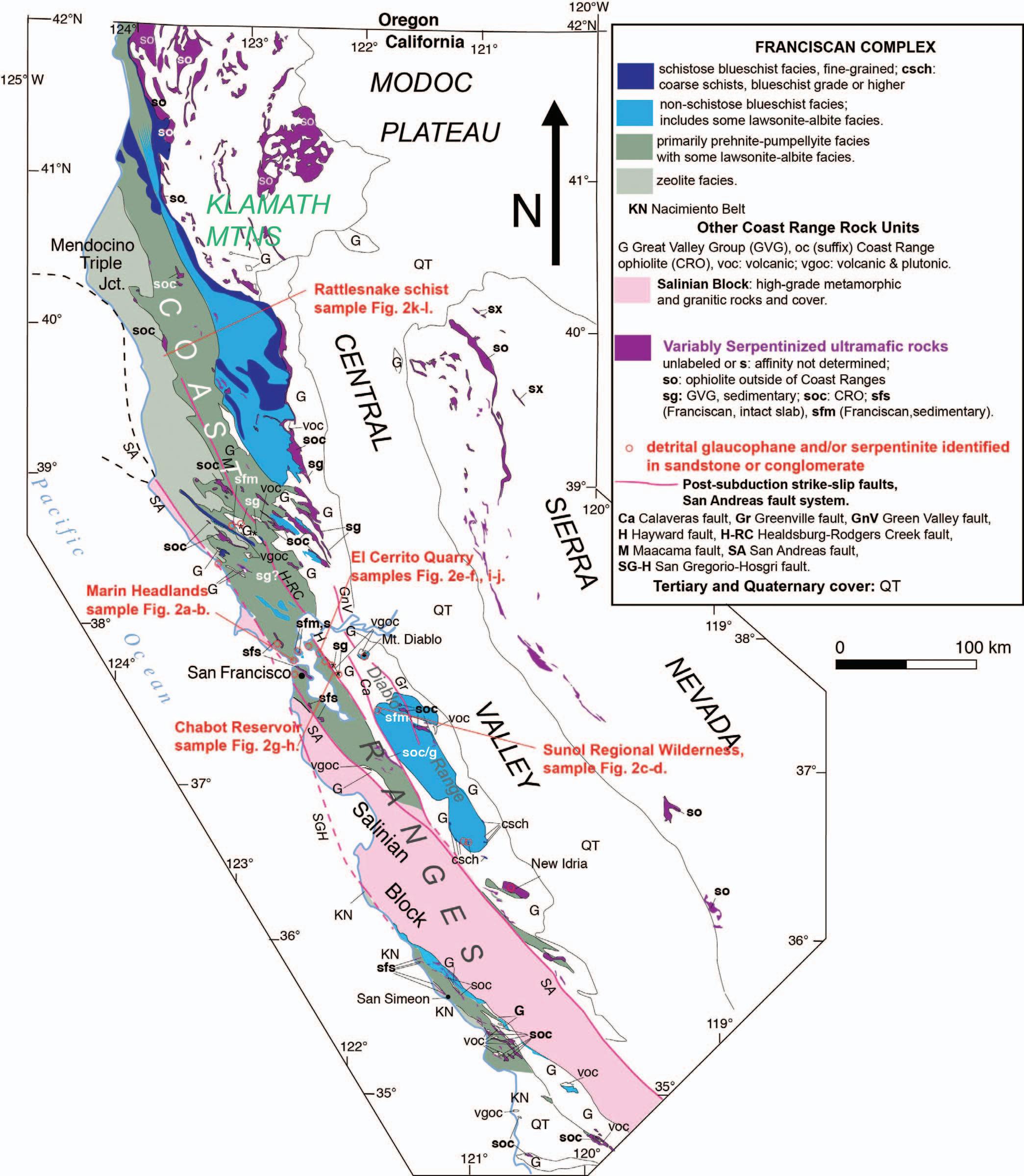Naturally Occurring Asbestiform Minerals in Italian Western Alps and in Other Italian Sites ELENA BELLUSO* Department of Earth Sciences, University of Torino, Via Valperga Caluso no. 35, 10125, Torino, Italy Interdepartmental Centre “G. Scansetti” for Studies on Asbestos and Other Toxic Particulates, University of Torino, Torino, Italy Institute of Geosciences and Earth Resources–IGG, National Research Council–CNR of Italy
ALAIN BARONNET Centre Interdisciplinaire de Nanosciences de Marseille, Université Aix-Marseille, France; Campus de Luminy, Case 913, 13288, Marseille, France
SILVANA CAPELLA Department of Earth Sciences, University of Torino, Via Valperga Caluso no. 35, 10125, Torino, Italy Interdepartmental Centre “G. Scansetti” for Studies on Asbestos and Other Toxic Particulates, University of Torino, Torino, Italy
Key Terms: NOA, Naturally Occurring Non-Asbestos Classified Asbestiform Minerals (NONA), TEM-EDS Identifications, Fiber Intergrowth ABSTRACT The natural occurrence of asbestos (NOA) in rocks and soil has been known for many years in several areas of the world, differently from the natural presence of asbestiform minerals. In Italy, the mapping of NOA is mandatory according to the 2001 and 2003 regulations. An investigation, not yet concluded, has revealed that in Italy, NOA is represented by chrysotile and tremolite asbestos with minor amounts of actinolite asbestos and anthophyllite asbestos. A field survey conducted in the Italian Western Alps (IWA), dealing with the natural occurrence of asbestiform minerals non-asbestos classified and not regulated, started many years ago and is still ongoing. It revealed that the following kinds of asbestiform silicates are present (in decreasing order of frequency): asbestiform polygonal serpentine and asbestiform antigorite, asbestiform diopside, asbestiform carlosturanite, asbestiform forsterite, asbestiform sepiolite, asbestiform balangeroite, and asbestiform talc. The asbestiform non-silicates brugnatellite and brucite have been rarely detected. Outside the IWA, asbestiform zeolite (erionite and offretite), asbestiform sodium amphibole (fluoro-edenite), and a few other asbestiform silicates have been also detected. For some asbestiform *Corresponding author email: elena.belluso@unito.it
minerals, the identification is problematic and needs the use of transmission electron microscopy combining imaging at high magnification and electron diffraction and chemical data. This investigation is particularly important to distinguish four kinds of asbestiform minerals (antigorite, polygonal serpentine, carlosturanite, and balangeroite) from chrysotile since only the last one is regulated. The issue is much more complicated by the intergrowth of different fibrous species on the submicrometer scale. INTRODUCTION In recent years and in several countries, health investigations dealing with asbestos have moved from occupational to environmental exposure (e.g., Baumann et al., 2015; Abakay et al., 2016; and Noonan, 2017). According to some authors, low but continuous exposure, as in the case of inhabitants of houses next to asbestos-bearing rock outcrops (i.e., naturally occurring asbestos [NOA]), could cause health problems (e.g., Luce et al., 2000; Bernardini et al., 2003). The same problem could concern the exposure to naturally occurring non-asbestos classified asbestiform minerals (NONA). For some of them, the carcinogenicity to high-dose exposure is known, as in the case of asbestiform fluoeredenite, asbestiform erionite, asbestiform winchite, and asbestiform richterite (e.g., Burragato et al., 2005; International Agency for Research on Cancer, 2012). In addition to these last minerals, many others with a similar asbestiform morphology have
Environmental & Engineering Geoscience, Vol. XXVI, No. 1, February 2020, pp. 39–46
39





















